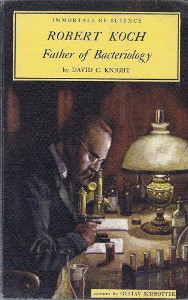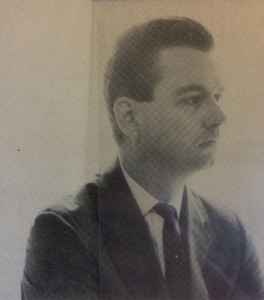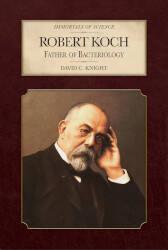Robert Koch: Father of Bacteriology

Author:
David C. Knight
Illustrator:
Gustav Schrotter
Publication:
1961 by Franklin Watts, Inc
Genre:
Biography, Non-fiction
Series:
Immortals of Science ![]() Members Only (World History)
Members Only (World History)
Pages:
165
Current state:
This book has been evaluated and information added. It has not been read and content considerations may not be complete.
Book Guide
Search for this book used on:
No other scientist has so aptly earned the title of "father" of his branch of science than Robert Koch. While Pasteur is regarded as the greatest applied bacteriologist, it was Koch who first perfected the pure techniques of cultivating and studying bacteria.
When Koch succeeded in isolating the dreaded anthrax bacillus, he became the first to prove that a specific bacterium was the cause of a specific disease. He also developed four famous rules—still in use today—for relating one kind of bacteria to one kind of disease. Later, he succeeded in growing pure cultures of bacteria, an essential technique in modern bacteriology.
In 1882, Koch astounded the scientific world by first isolating the tubercle bacillus—the cause of tuberculosis. Later he discovered tuberculin, a substance used in diagnosing tuberculosis today. A tireless worker, Koch went on to save thousands of lives, both human and animal through his investigation of Asiatic cholera, sleeping sickness, malaria, Texas fever, rinderpest, and Rhodesian red water fever.
From the book
To view an example page please sign in.
Content Guide
Please sign in to access all of the topics associated with this book and view other books with the same topics.
Please sign in to access the locations this book takes place in and view other books in the same location.
Please sign in to access the time periods this book takes place in and view other books in the same time period.
For information about the lead characters please sign in.
Please sign in to access information about the content of this book that you may want to consider before reading.
Reviews

The Immortals of Science Series
Reviewed by Sara Masarik
These books are of varying lengths based on how much is known about the lives of the subject. Whatever the length, I sped through each one as though it were a suspense novel. How will this one manage to carry on his work in the midst of civil war? How can that one earn the respect of the scientific community so his work can be published for the world? What will be the exciting sequence of events that will lead to the ultimate breakthrough? Will he live long enough to find the answer he has searched for all his life?
The science in these books is written in language any curious reader will be able to understand. The authors don’t condescend, but the writing is not above a confident reader, perhaps ten and above. They would also be interesting enough for reading aloud so they can be shared with the entire family, whatever their ages.
Find This Book
Search for this book used on:




